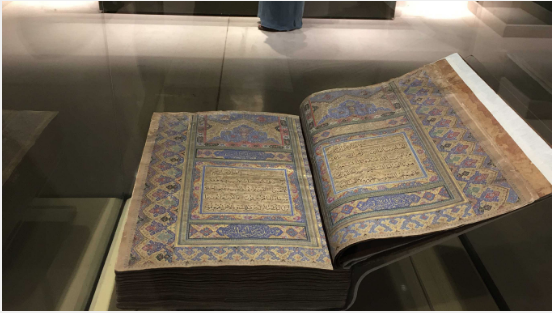Due to the spread of Corona virus, which is spreading among societies all over the world, a large number of countries, including Egypt, have taken precautionary measures to confront the spread of the virus, among them the suspension of the study, in addition to permanently preventing gatherings, reducing the number of workers in institutions, closing archaeological sites and museums, and during the next report we accompany The reader is touring the Sohag Museum, which is located on the eastern bank of the Nile, on the opposite side of the governorate building, for those who want to enter and visit the museum, during the period of prevention from the virus.
Sohag Museum includes many how many distinguished antiques, and before reviewing the number of the museum's holdings and the most prominent exhibits, we first clarify that the museum has been under construction for about a quarter of a century, and was opened in 2018 AD, and is located in a privileged location on the eastern bank of the Nile River, on the opposite side of the governorate building, and borders it To the north is the Engineers Syndicate building, and to the south is a tourist hotel, about 200 meters from the university's headquarters.
The museum includes more than 945 artifacts from different eras, and is built on an area of approximately 8500 square meters, at a cost of 72 million pounds. In the area, to facilitate the movement of tourists to the museum.
Among the highlights of the museum are the statues of the statue of the god "Sekhmet", the god of war at the Pharaohs two meters long, and the statue of "Nakht Min", the ruler of Akhmim in the old state, made of granite stone with a height of one meter, next to the "basement", which includes halls to display the pieces The archaeological, administrative offices, library and ground floor includes 7 exhibition halls, a VIP hall and a marina for ships on the Nile.
The museum includes 6 exhibition halls, so that the first hall displays various information about the kings and important personalities, so every showcase of a museum displays how the ruling king became the center of the state for thousands of years, and this appears through the repetition of the name of the ruler or king, not only on his statues or His temple or cemetery, but also appears on other artifacts belonging to the figures who held many public offices in the state.
The first exhibition hall also includes a set of these cards, which are made of ivory, and are dated to the names of the kings, as well as the clay seals on which the name of the product and the date of its manufacture were placed.
As for the second hall, the museum exhibit sheds light on the Egyptian family, especially in Upper Egypt, and explains the role of the Egyptian woman in the family, its importance, and how she was concerned with her family, children, and herself, both beauty and adornment.
The third exhibition hall highlights the extent of the ancient Egyptian's concern for health, as it displays the tools of the ancient Egyptian kitchen, and how he could store or dry food to remain a variety of different types, and the museum exhibition works are still continuing to highlight all the artifacts in various other halls.
.jpg)
.jpg)
.jpg)
.jpg)

.jpg)
.jpg)
.jpg)
.jpg)
.jpg)
.jpg)
.jpg)
.jpg)
.jpg)
.jpg)

 Thu, Apr. 16, 2020
Thu, Apr. 16, 2020
.jpg)
.jpg)
.jpg)
.jpg)

.jpg)
.jpg)
.jpg)
.jpg)
.jpg)
.jpg)
.jpg)
.jpg)
.jpg)
.jpg)
